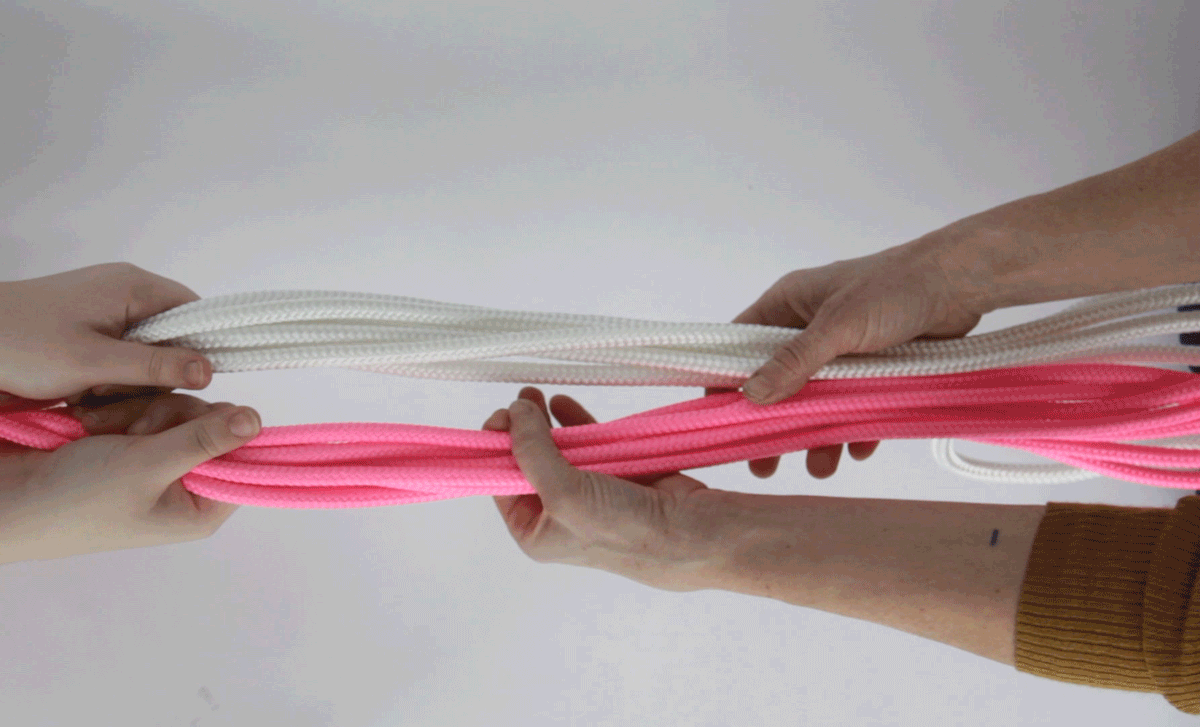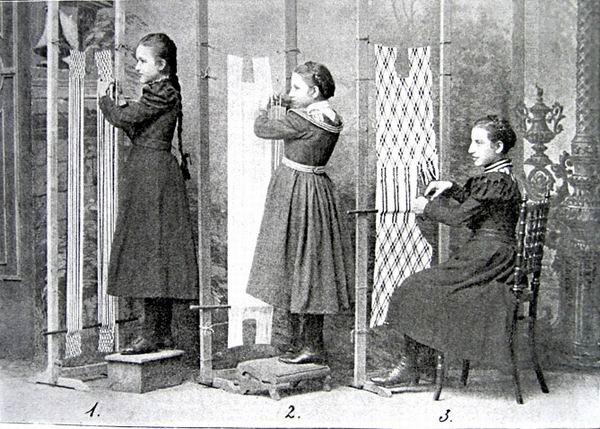Twining
Twining refers to the movement where two or more strands, such as threads, yarns, or branches move over and under each other in a twisting way. The simplest form of a twined object is a rope, yarn, or thread. The discovery of this technique opened a whole new range of possibilities for humankind and preceded more sophisticated techniques such as spinning. These techniques share their roots in the principal movement of twining or twisting two or more elements around each other. Another important characteristic is that the combination of opposite torsions results in a tension that holds the opposite torsion and gives extra strength to the twined elements, which happens for example in a rope.
Besides twining can function as a lock to hold something in place. Thanks to the inherent tension between the two or more twined elements, a third one can be inserted and held in place. This principle is applied in techniques such as card weaving, basket twining and ply-split. It allows the maker to create not only flat surfaces but also three-dimensional structures if the movement is executed in a constant tension.
The gesture of twining overarches different traditional techniques such as ply-split, card weaving, rope twining, basket twining and sprang.

Trial & Error
Insights
Sprang

